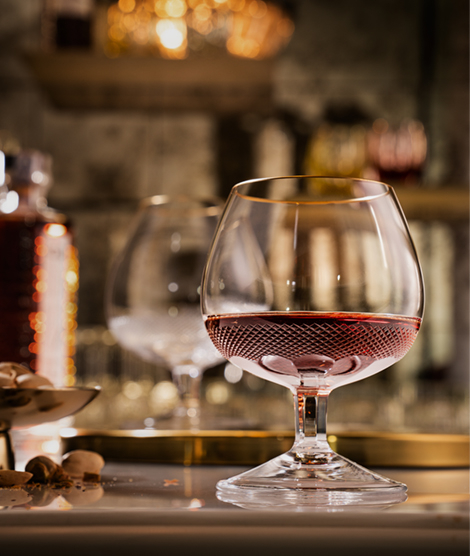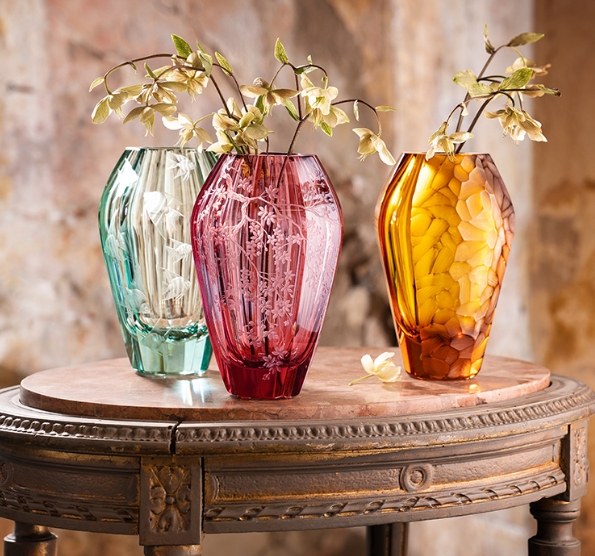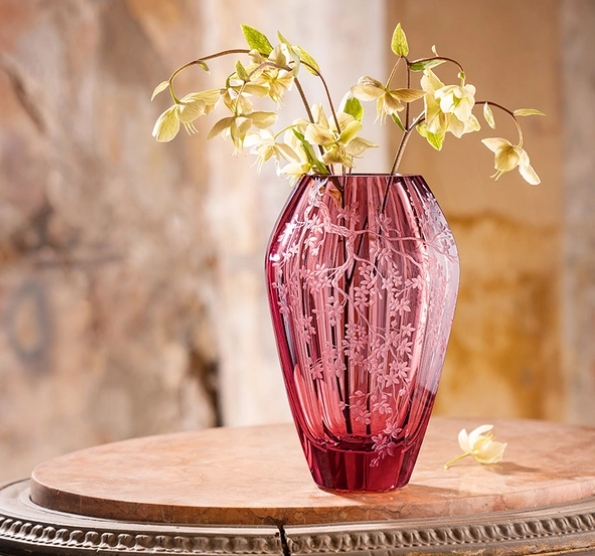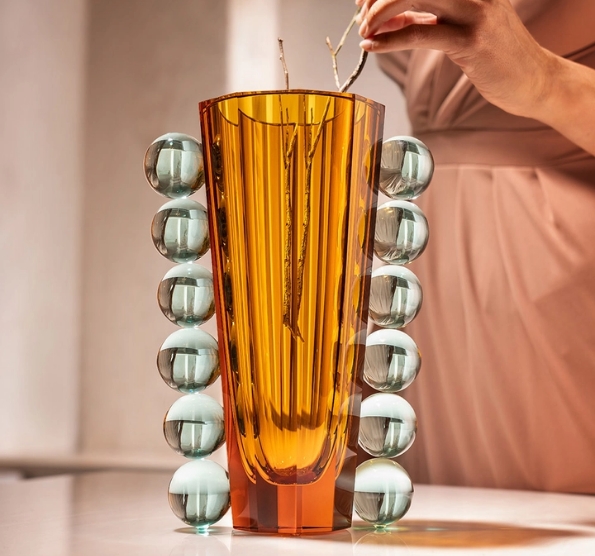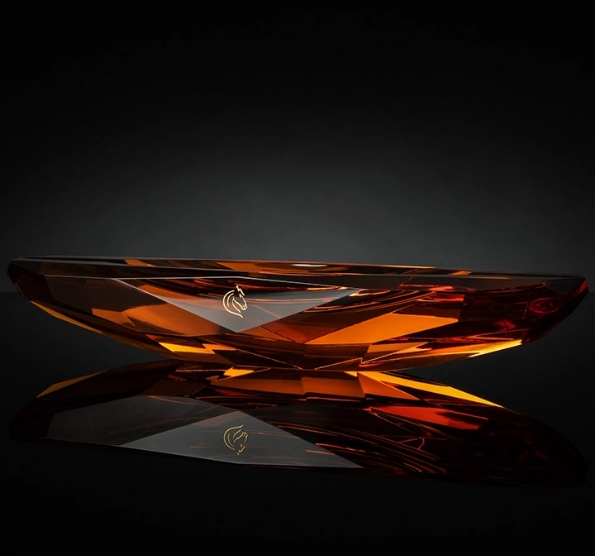
Breadcrumbs navigation
- Home page
- About Moser
- Blog
- CRAFTSMANSHIP UP CLOSE: RULES OF THE FORMS
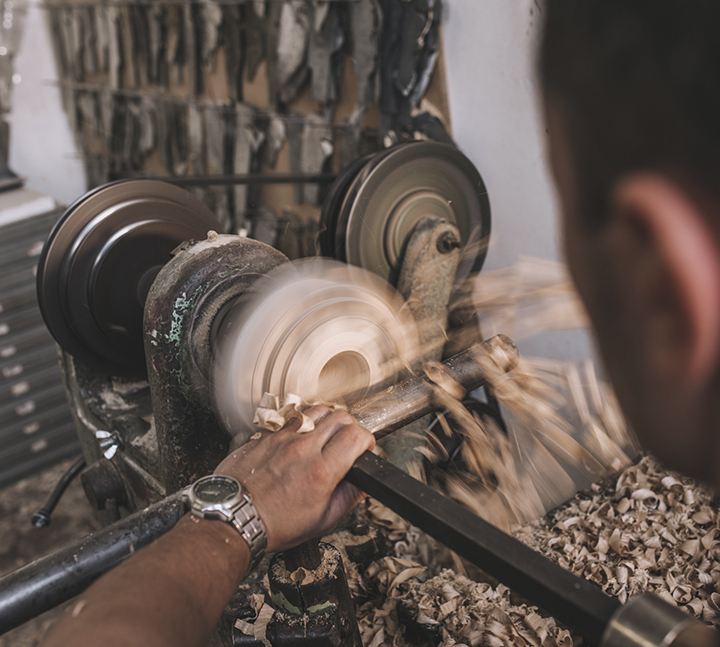
CRAFTSMANSHIP UP CLOSE: RULES OF THE FORMS
Meanwhile the batchmakers Martin and Vaclav work on the mixture for the molten glass, other parts of Moser glassworks hand manufacture are being busy.
Only few steps from the glassworkers’ furnaces and the cutters discs, the heat of the fire and cold of the water change for smell of fresh wood. Among the sawdust drifts is the kingdom of Roman, who make sure daily that the hot molten glass gets the right shapes when cooling down. Let’s have a look at their work – this time we invite you to the form-making workshop.
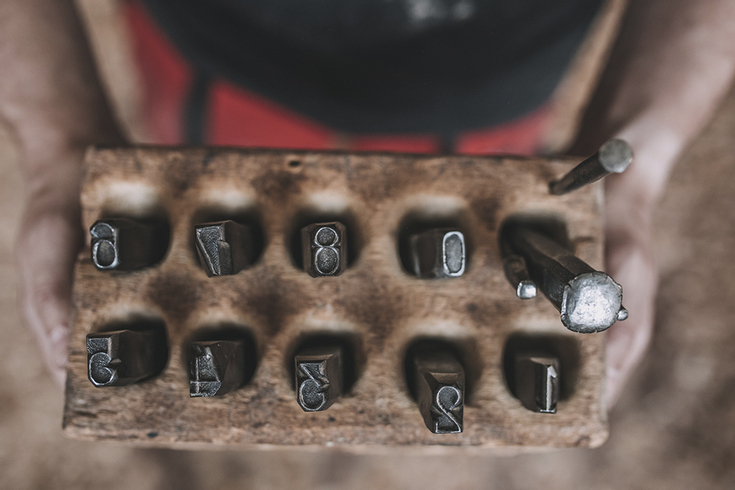 It might seem, at the first sight, that this wooden world is out of place in the glassworks. Just as with the batchmakers, however, the master glassworkers could hardly succeed without the form makers. True, glass can be blown “handsfree”. However, with some bigger series then, maximum sameness can be hardly guaranteed. Blowing into the form, therefore, ensures definite shape of each and every piece, which comes out after the form cooling.
It might seem, at the first sight, that this wooden world is out of place in the glassworks. Just as with the batchmakers, however, the master glassworkers could hardly succeed without the form makers. True, glass can be blown “handsfree”. However, with some bigger series then, maximum sameness can be hardly guaranteed. Blowing into the form, therefore, ensures definite shape of each and every piece, which comes out after the form cooling.
But let’s start from the beginning. What does the form look like and how is it made? Forms can be metal as well as plaster. In Moser, however, we stick to traditional ways and we use wood for the form making. It is, more precisely, hard raw oak or pear wood. The choice is, in this case, quite clear as these two types down have much prominent annual rings that could get imprinted onto the glass. The oak wood is, compared to the pear one, slightly dominant given the growth limits of the former one – pear is, therefore, used mostly for smaller forms and with smaller glass pieces, mainly the drinking sets.
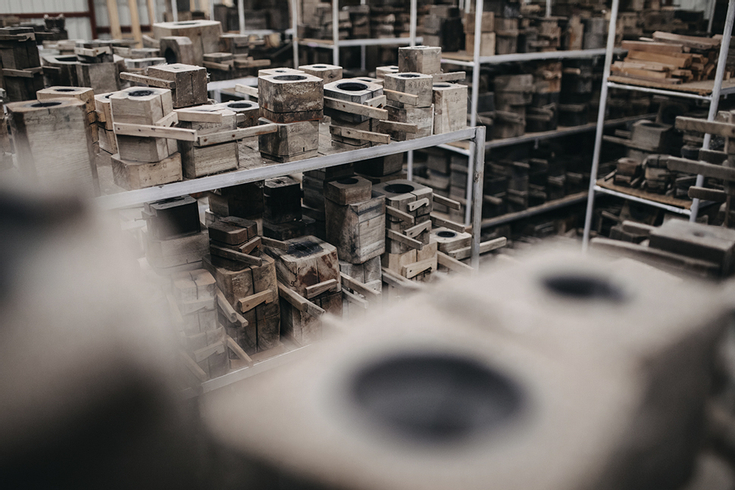 The first thing that catches one’s eye upon entering the form making workshop are big blocks of wood. They do not remain untreated for long then. Roman, as the head form maker, quickly grabs one of them and skilfully, quickly and without difficulty he creates the main cuboid / cube at the saw. Where a layman had to focus at saving his / her fingers only, Roman can, in a very short time, determine where and how to cut so that the form has the right profile for the blowing not making any of the unwanted imprints. Before moving to another stage, he then also manages to cut little details – such as the valve and two little handles protecting the helper at the furnace from burns.
The first thing that catches one’s eye upon entering the form making workshop are big blocks of wood. They do not remain untreated for long then. Roman, as the head form maker, quickly grabs one of them and skilfully, quickly and without difficulty he creates the main cuboid / cube at the saw. Where a layman had to focus at saving his / her fingers only, Roman can, in a very short time, determine where and how to cut so that the form has the right profile for the blowing not making any of the unwanted imprints. Before moving to another stage, he then also manages to cut little details – such as the valve and two little handles protecting the helper at the furnace from burns.
Then it is the lathe turn finally – with the round shapes only. The angular ones are made with chisels mainly. But now…a cut in the storyline…as before going to lathe Roman heads to a large cupboard with number of drawers. Opening of one of them brings yet another surprise you might not expect in the glassworks environment as the files reveal templates / cuts for every Moser glass piece, thoroughly number and waiting for their part in Moser morphology.
But back to the lathe…Roman uses the template for setting of the machine and then wood starts breaking. After creating the precise inner shape, it is time to cut the form in two and connect it with hinges allowing its opening after cooling. The already mentioned valve and handles have to be made. And as the final step, Roman also drills the holes for steam draining as the forms fumes a lot as the hot molten glass touches the wet wood.
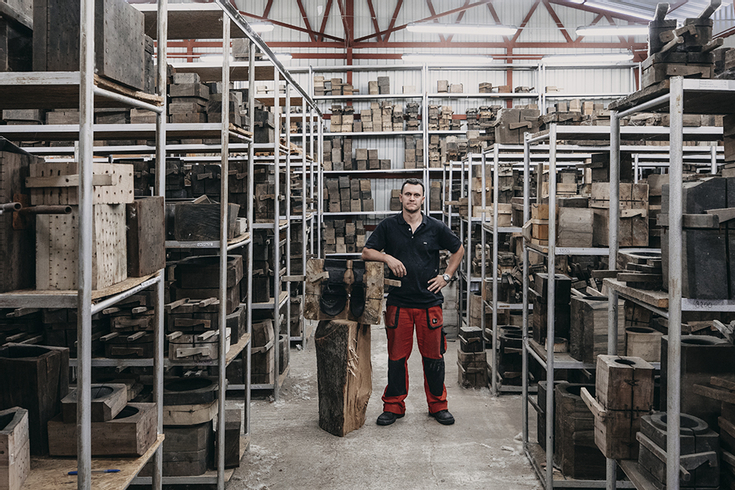
Thus, the templates are by far not for a single use only. The forms get worn down more or last fast (depending on the glass thickness with each product) and have to be checked and re-measured frequently. No wonder, the burnt-through places can make quite a mess in the shape making. The measures are then clear – as soon as the form is not precise, it is time to make a new one from the beginning. With smaller, thin-walled products the lifespan can be matter of hundreds, and with one of the heaviest Moser vases, Pear, it can be only units. Roman and XY’s work has, therefore, no ends. And what is more – these two pitch in at other stages of the hand manufacture as well. They cut thin metal templates for measuring the height and other parameters at all of the control stations and the night glass smelters use their cuts of the frontal wood for stirring the mixture turning close to the morning into the molten glass. This brings us to the furnaces already, which means that next time we go for tour de glassworks, presenting the work of our master glassworkers themselves.
